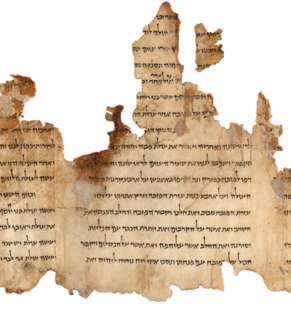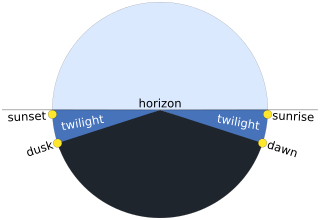Asher ben Jehiel was an eminent rabbi and Talmudist best known for his abstract of Talmudic law. He is often referred to as Rabbenu Asher, “our Rabbi Asher” or by the Hebrew acronym for this title, the Rosh. His yahrzeit is on the 9 Cheshvan.

Rabbinic literature, in its broadest sense, can mean the entire spectrum of rabbinic writings throughout Jewish history. However, the term often refers specifically to literature from the Talmudic era, as opposed to medieval and modern rabbinic writing, and thus corresponds with the Hebrew term Sifrut Hazal. This more specific sense of "Rabbinic literature"—referring to the Talmudim, Midrash, and related writings, but hardly ever to later texts—is how the term is generally intended when used in contemporary academic writing. On the other hand, the terms meforshim and parshanim (commentaries/commentators) almost always refer to later, post-Talmudic writers of rabbinic glosses on Biblical and Talmudic texts.

The Shulchan Aruch, sometimes dubbed in English as the Code of Jewish Law, is the most widely consulted of the various legal codes in Judaism. It was authored in Safed by Joseph Karo in 1563 and published in Venice two years later. Together with its commentaries, it is the most widely accepted compilation of Jewish law ever written.

Dirham, dirhem or dirhm (درهم) was and, in some cases, still is a unit of currency in several Arab states. It was formerly the related unit of mass in the Ottoman Empire and old Persian states. The name derives from the name of the ancient Greek currency, drachma.
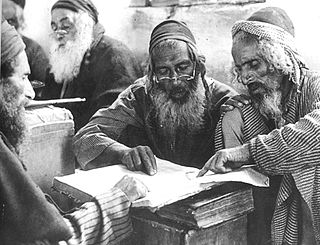
Yemenite Hebrew, also referred to as Temani Hebrew, is the pronunciation system for Hebrew traditionally used by Yemenite Jews. Yemenite Jews brought their language to Israel through immigration. Their first organized immigration to the region began in 1882.
Acharonim is a term used in Jewish law and history, to signify the leading rabbis and poskim living from roughly the 16th century to the present, and more specifically since the writing of the Shulchan Aruch in 1563 CE.

Rabbi Moses Isserles, was an eminent Polish Ashkenazic rabbi, talmudist, and posek.
Aruch HaShulchan is a chapter-to-chapter restatement of the Shulchan Aruch. Compiled and written by Rabbi Yechiel Michel Epstein (1829–1908), the work attempts to be a clear, organized summary of the sources for each chapter of the Shulchan Aruch and its commentaries, with special emphasis on the positions of the Jerusalem Talmud and Maimonides.
Joseph ibn Migash or Joseph ben Meir HaLevi ibn Migash or Yosef Ibn Meir Ha-Levi Ibn Megas or José ben Meir ibn Megas was a Rabbi, Posek, and Rosh Yeshiva in Lucena. He is also known as Ri Migash, the Hebrew acronym for "Rabbi Joseph Migash".
History of responsa in Judaism spans a period of 1,700 years. Rabbinic responsa constitute a special class of rabbinic literature, differing in form, but not necessarily in content, from Rabbinic commentaries devoted to the exegesis of the Bible, the Mishnah, the Talmud, and halakha. The codes themselves contain the rules for ordinary incidents of life. The responsa literature covers all these topics and more. The mode, style and subject matter have changed as a function of the travels of the Jewish people and of the development of other halakhic literature, particularly the codes. Forumulation of responsa, or she'elot ve-t'shuvot, which literally translates to questions and answers, generally involve an individual or group asking either teachers, rabbis, or heads of yeshivot about halakhah and the party responding via an exchange of letters. Responsa literature spans 1700 years and there are even responsa being developed based on questions posed today. The development of responsa literature can be divided into four periods: the Tannaitic Period, the Geonic Period, the First Rabbinic Epoch,the Second Rabbinic Epoch, the Third Rabbinic Epoch, and the Fourth Rabbinic Epoch.
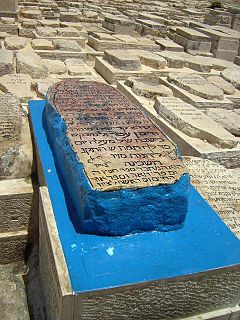
Ḥayyim ben Moshe ibn Attar also known as the Or ha-Ḥayyim after his popular commentary on the Pentateuch, was a Talmudist and kabbalist; born at Meknes, Morocco, in 1696; died in Jerusalem, Ottoman Empire on 7 July 1743. He was one of the most prominent rabbis in Morocco.
Rabbi Yiḥya Ṣāleḥ, known by the acronym of Maharitz, , was one of the greatest exponents of Jewish law known to Yemen. He is the author of a liturgical commentary entitled Etz Ḥayyim, in which he follows closely the legal dicta of Maimonides. Rabbi Yiḥya Ṣāleḥ is widely remembered for his ardent work in preserving Yemenite Jewish customs and traditions, which he articulated so well in his many writings, but also for his adopting certain Spanish rites and liturgies that had already become popular in Yemen. In this regard, he was strongly influenced by the Rabbis of his previous generation, Rabbi Yehudah Sa'adi and Rabbi Yihya al-Bashiri. Initially, Rabbi Yiḥya Ṣāleḥ worked as a blacksmith until the age of thirty, after which he worked as a scrivener of sacred texts, before becoming chief jurist of the rabbinical court in Sana'a.

Posek is the term in Jewish law for a "decisor" — a legal scholar who determines the position of Halakha in cases of law where previous authorities are inconclusive, or in those situations where no clear halakhic precedent exists.
The following outline is provided as an overview of and topical guide to Judaism:
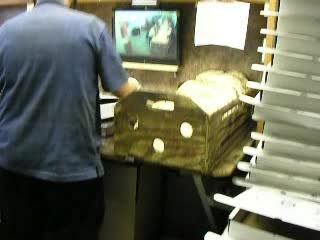
The dough offering is a positive commandment requiring the owner of a bread dough to give a part of the kneaded dough to a kohen. This commandment is one of the twenty-four kohanic gifts.

Jewish law today prescribes several kinds of hand washing :
Yaakov de Castro, alternative spelling: Yaakov Costaro (1525–1610), was a rabbinic scholar, judge and exponent of Jewish law in Cairo, Egypt. A descendant of Jews who fled Portugal during the time of the Portuguese Inquisition, his family eventually came to settle in Egypt. A student of the illustrious Radbaz, he is considered the last Chief Rabbi of Egypt to hold sway over the entire Jewish community in Egypt, mostly Musta'arabi Jews, after the abolishment of the office of nagid, and whose halachic rulings were widespread across the land. He was a nephew of the master of the mint for the Ottoman Sultan in Cairo, Abraham de Castro.
Solomon Sirilio (1485–1554), the son of Joseph Sirilio, was a rabbi and author of one of the first commentaries made on the Jerusalem Talmud.
Nathan ben Abraham, known also by the epithet President of the Academy in the Land of Israel, was an 11th-century rabbi and exegete of the Mishnah, a compendium of Jewish oral law, whose original Judeo-Arabic commentary of the Mishnah served as the basis for a later recension made by a 12th-century anonymous author and copyist, believed to be of Yemenite Jewish provenance. It is doubtful that his work would have survived, had it not been for the faithful copyist, whose innovation was to interweave in the existing text the divergent views held by several geonim and the explanations given by them for words and passages in the Mishnah. The author's introduction reads: "I found the commentaries of Rabbi Nathan, the President of the Academy, [which he made] for explicating the different language usages in the Mishnah, and I have seen fit to add thereto others besides, drawn from the commentaries of Israel's sages." Rabbi Nathan's work is one of the first known commentaries of the Mishnah, ranking with that of Rabbi Hai Gaon's commentary on Seder Taharot in the Mishnah. Among commentaries, scholars have ascribed a unique place unto the commentary of Rabbi Nathan, saying that by virtue of its composition in the Land of Israel, the interpretations of R. Nathan Av ha-Yeshivah are believed to embody an unbroken Palestinian-Jewish tradition on the meanings of difficult words. The treatise also sheds light on the diachrony of Hebrew words. The entire work was rendered into a Hebrew translation by Rabbi Yosef Qafih, with an abridged first edition being published between the years 1955 and 1958, and the second edition in 1965. Even so, the work has not seen widespread circulation.








